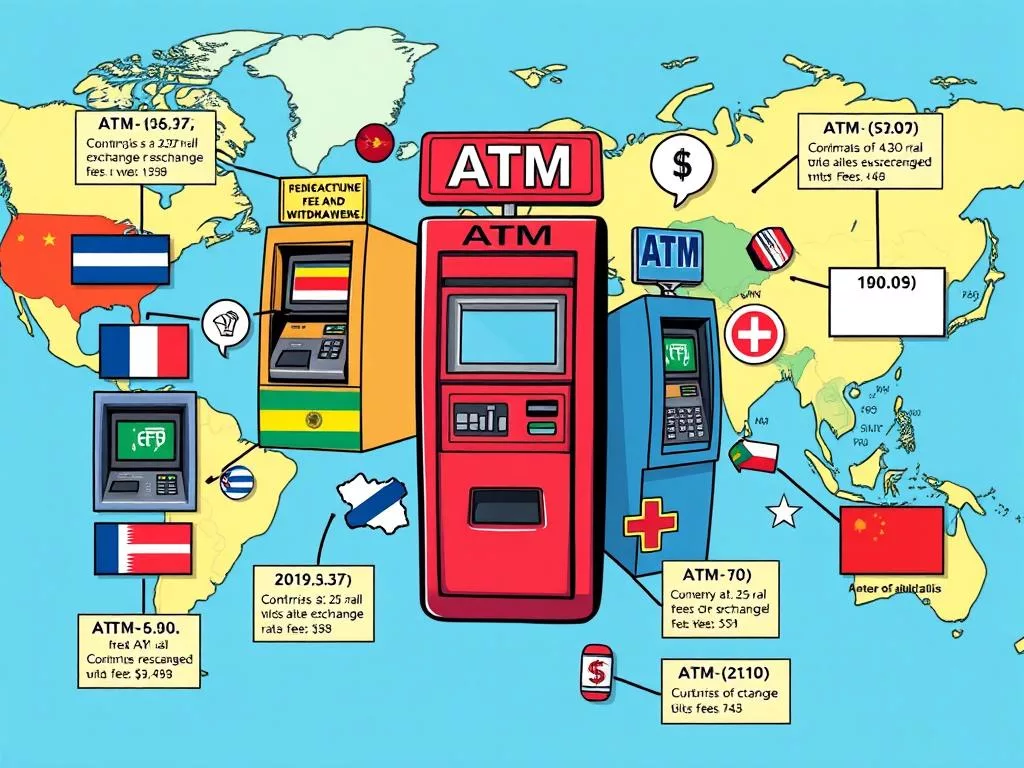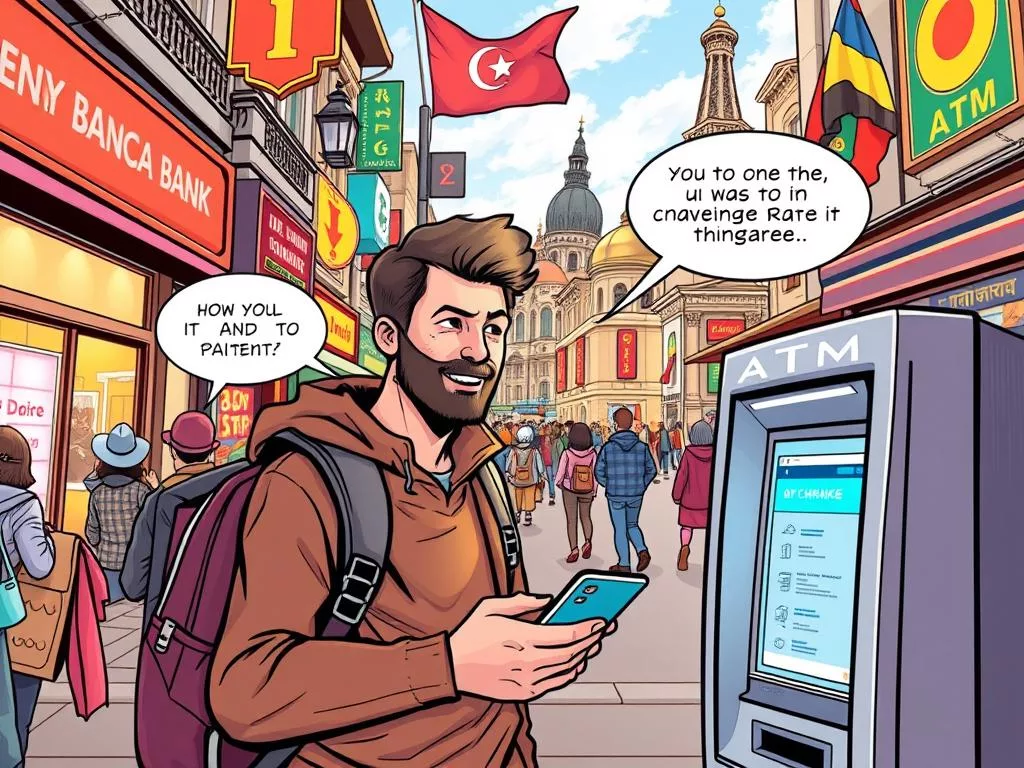Traveling internationally means you might need to use ATMs for cash. It’s good to know the risks and costs. ATMs at airports and exchange bureaus usually charge more because they’re so convenient.
To save money, learn about exchange rates and watch them closely. Choose ATMs from well-known banks. Use international ATM locator tools to find the best ones. Knowing about fees like international transaction and currency conversion can also help.
Look for deals between your bank and foreign banks to avoid some fees. Always choose to use the local currency to avoid Dynamic Currency Conversion. This can be more expensive because of bad exchange rates and hidden fees.
Know your bank’s daily ATM withdrawal limit, usually between $300 and $1000. Going over this can cost extra. To stay safe, set a low limit for ATM withdrawals.
Tell your bank you’re traveling to avoid account freezes. Use account alerts to keep an eye on your money. This way, you can stay safe and avoid financial loss.
Understanding International ATM Fees and Rates
When you travel abroad, knowing about ATM fees is key. Different fees can quickly add up, making each withdrawal expensive. For example, foreign transaction fees are 1% to 3% of the amount you withdraw.
Out-of-network ATM fees can cost $2 to $5 per use. ATMs, even if they’re not part of big banks, might charge extra fees.

Don’t forget about currency conversion fees, which can be up to 7%. This is on top of the foreign transaction fee. To save money, talk to your bank about their fees and see if they have international banking deals that can help.
Choosing the right card is also important. Cards like The Platinum Card® from American Express and the Chase Sapphire Preferred® Card don’t charge foreign transaction fees. Some banks, like HSBC and USAA, don’t charge ATM fees abroad. Others, like Wells Fargo and USAA, will even pay back ATM surcharges.
To save money, withdraw more money at once to avoid ATM fees. Look for ATMs at big banks or post offices to avoid extra charges. Using a credit card instead of an ATM can also save you money, as long as it doesn’t charge foreign transaction fees.
| Type of Fee | Percentage/Flat Rate |
|---|---|
| Foreign Transaction Fees | 1-3% |
| Out-of-Network ATM Fees | $2 to $5 |
| ATM Surcharge | Varies (usually $2-$5) |
| Currency Conversion Fees | Up to 7% |
Knowing about these fees and planning ahead can help you save money when using ATMs abroad. Look for cash-back deals or use banks with good international ATM policies. Being informed can help you enjoy your travels without financial worries.
Effective Strategies to Use ATMs Abroad
Travelers need smart ways to get cash when abroad. Avoid ATMs at airports and hotels because they cost more. Instead, use those in bank branches or part of a global network your bank is in. This way, you save money and get better exchange rates.

To cut down on fees, take out more money at once but less often. Always choose to be charged in the local currency to avoid extra fees. Also, tell your bank you’re traveling to avoid any issues with your money.
Check ATMs for tampering and choose safe, well-lit spots. Knowing how ATMs work abroad helps you use them wisely. Some ATMs have limits on how much you can take out, even if your bank allows more.
Here’s a quick guide to help you plan better:
| Option | Pros | Cons |
|---|---|---|
| Bank ATMs | Lower fees, reliable exchange rates | Limited access during non-business hours |
| Prepaid Travel Cards | Lower foreign transaction and ATM fees | Usage fees and limited reload options |
| Independent ATMs | Accessibility | Higher surcharges and less favorable rates |
Using budgeting apps can also help you keep track of your spending. If your card is lost or stolen, many prepaid cards can be frozen or replaced quickly through apps.
For more on debit card issues abroad and financial tips, check out this guide. Following these tips will make your trip better and keep your money safe.
Guide to ATMs Abroad: What You Need to Know
Using ATMs abroad requires understanding global financial systems. Networks like PLUS and Cirrus cover many countries, making it easy to find cash. Use a global ATM locator to find ATMs before you go. Knowing about the Global ATM Alliance can save you money, as it includes big banks like Bank of America and Barclays.
Before traveling, learn about possible fees. American travelers might face a 1-3% fee for converting currency. Visa or MasterCard fees are usually under 1%. Some U.S. banks have deals with European banks, so you might not pay extra fees at certain ATMs. Cards from Capital One and Charles Schwab are great for traveling without extra costs.
Security is key when using ATMs abroad. Debit cards can be at risk for scams. Always choose ATMs from well-known banks and in safe places. Check the ATM for tampering and never share your PIN. It’s smart to have more than one debit card and tell your bank about your travel plans.
Following these tips helps you manage money abroad smoothly. Try to use local currency and save credit cards for big purchases. Keep an eye on your account and have a plan for lost cards. Stay alert, use RFID-blocking wallets, and think about digital wallets for extra safety.

